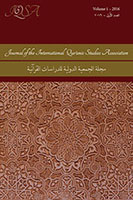The Qurʾān has been the topic of scholarly discussion and debate since the begin-ning of the Islamic period and until today. Critical scholarship on the Qurʾān, as with the critical study of the Bible, began in earnest in the nineteenth century CE, and continues to be active and lively. In recent decades, a particularly vigorous debate has swirled around the date and manner of the qurʾānic composition, as well as the nature of the codification process. Compared to this (and other) debates, there has been surprisingly little discussion of the language of the Qurʾān. Most scholars have accepted variations on the same narrative, namely that the Qurʾān was composed in a language similar – if not identical – to the language of the pre-Islamic qaṣīdah poems, described by the early grammarians of Arabic, attested to by the reading traditions (qirāʾāt), and typically considered (more or less) identical to textbook Classical Arabic (al-fuṣḥā).1 The consonantal base of the Qurʾān (often called the ‘Qurʾānic Consonantal Text’, or QCT for short; Arabic rasm), insofar as it differed from the reading traditions (and Classical Arabic), has been considered an inaccurate guide to the original lan-guage, the result of pausal spelling practices and a general mismatch between the language the script was developed to represent and the language of the Qurʾān.
Download Resource
The Qurʾān has been the topic of scholarly discussion and debate since the begin-ning of the Islamic period and until today. Critical scholarship on the Qurʾān, as with the critical […]

